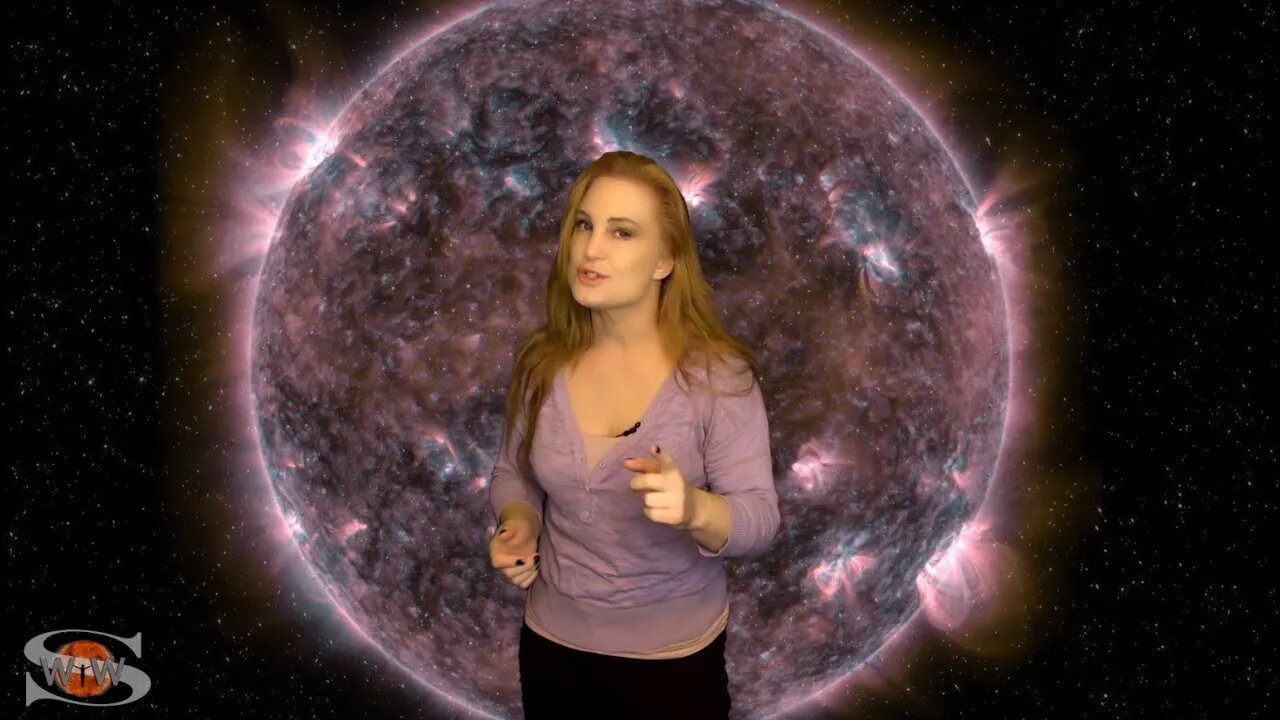Premium Only Content

Fast Wind Storming with More to the East & West | Solar Storm Forecast 01.17.2022
This Space Weather News forecast sponsored in part by Millersville University:
https://www.millersville.edu/swen
The Sun has Earth in its' crosshairs this week! We've had no less than three solar storms to contend with all in the past few days. The first solar storm was launched by region 2925 back on January 14 and was supposed to hit yesterday, but it missed Earth, thanks to the fast solar wind from the large coronal hole passing through the Earth-strike zone now. Likely that fast wind stream deflected the solar storm to the west of Earth. But no matter, the fast wind has been sporadically bumping us to storm levels off and on over the past couple days. We even reached G2-level conditions for about three hours right around the 15th, but don't be fooled, as these conditions were more bark than bite. Even aurora chasers had a difficult time catching much more than a glimpse of aurora at mid-latitudes. Still this storm will keep us on our toes over the next couple days, plus we have yet another solar storm on the way. This one was launched by region 2929 in the north. This new solar storm has a better chance of hitting Earth than the previous one did, but it still could be a glancing blow around the 20th. In addition, we have no less than seven active regions on the Earth-facing Sun, which is keeping solar flux boosted into the triple digits and allowing decent radio propagation on Earth's dayside. Big flares and radio blackouts are a slight risk now, but it is not too bad for GPS reception overall. Learn the details surrounding all of this activity and see what else our Sun has in store. Want early access to these forecasts, tutorials on Space Weather, & more? Visit:
https://patreon.com/SpaceweatherWoman
For daily and often hourly updates (during active times) visit me on Twitter:
https://twitter.com/TamithaSkov
For a more in-depth look at the data and images highlighted in this video see these links below.
Solar Imaging and Analysis:
SDO: http://sdo.gsfc.nasa.gov/data/
Helioviewer: http://www.helioviewer.org/
Flare Analysis: http://www.lmsal.com/solarsoft/latest_events/
Computer Aided CME Tracking CACTUS: http://www.sidc.oma.be/cactus/out/latestCMEs.html
GOES Xray: http://www.swpc.noaa.gov/rt_plots/xray_1m.html
SOHO: http://sohodata.nascom.nasa.gov/
Stereo: http://stereo.gsfc.nasa.gov/
GONG magnetic field synoptic movie: https://gong.nso.edu/data/magmap/standard_movie.html
GONG magnetic field synoptic charts: http://gong.nso.edu/data/magmap/
LMSAL Heliophysics Events HEK http://www.lmsal.com/isolsearch
Solar Wind:
DISCOVR solar wind: http://www.swpc.noaa.gov/products/real-time-solar-wind
ACE Solar Wind: http://www.swpc.noaa.gov/products/ace-real-time-solar-wind
NASA ENLIL SPIRAL: https://iswa.gsfc.nasa.gov/IswaSystemWebApp/iSWACygnetStreamer?timestamp=2038-01-23+00%3A44%3A00&window=-1&cygnetId=261
NOAA ENLIL SPIRAL: http://www.swpc.noaa.gov/products/wsa-enlil-solar-wind-prediction
Magnetosphere, Ionosphere, Atmosphere:
GOES Magnetometer: http://www.swpc.noaa.gov/products/goes-magnetometer
Ionosphere D-Region Absorption (DRAP) model: http://www.swpc.noaa.gov/products/d-region-absorption-predictions-d-rap/
Auroral Oval Ovation Products: http://www.swpc.noaa.gov/products/aurora-30-minute-forecast
Global 3-hr Kp index: http://www.swpc.noaa.gov/products/planetary-k-index
Wing Kp index prediction: http://www.swpc.noaa.gov/products/wing-kp
USGS Ground Magnetometers: http://geomag.usgs.gov/realtime/
USGS Disturbance Storm-Time (Dst): http://geomag.usgs.gov/realtime/dst/
NAIRAS Radiation Storm Model: http://sol.spacenvironment.net/raps_ops/current_files/globeView.html
Multi-Purpose Space Environment Sites:
NOAA/SWPC: http://www.swpc.noaa.gov
SOLARHAM: http://www.solarham.net/index.htm
Spaceweather: http://spaceweather.com
iSWA: http://iswa.gsfc.nasa.gov/iswa/iSWA.html
Definition of Geomagnetic Storm, Radiation Storm, and Radio Blackout Levels:
http://www.swpc.noaa.gov/NOAAscales/
None of this would be possible without the hard work and dedication of those who have provided all of this data for public use.
Images c/o NASA/ESA/CSA (most notably the superb SDO, SOHO, ACE, STEREO, CCMC, JPL & DSN teams, amazing professionals, hobbyists, institutions, organizations, agencies and amateurs such as those at the USAF/HAARP, NICT, NOAA, USGS, Environment Canada, Natural Resources Canada, Intellicast, Catatania, rice.edu, wisc.edu, sonoma.edu ucalgary.ca, rssi.ru, ohio-state.edu, solen.info, and more. Thanks for making Space Weather part of our every day dialogue.
-
 14:35
14:35
Dr. Tamitha Skov
1 year ago $0.02 earnedBig Flares, Mini-Storms & A Whole Lot of Eye Candy | Solar Storm Forecast 10 December 2023
2441 -
 LIVE
LIVE
Benny Johnson
3 hours ago🚨Pete Hegseth Confirmation LIVE NOW as THOUSANDS Of Vets Show Support at Capitol | Trump CHEERS On
21,489 watching -
 LIVE
LIVE
LFA TV
16 hours agoHEGSETH HEARING LIVE! | LIVE FROM AMERICA 1.14.25 11am
4,162 watching -
 1:33:12
1:33:12
Graham Allen
4 hours agoBiden is SABOTAGING Trump!! Says: “Our Economy Is Strong” + Elon Is Buying TikTok?!
63.3K22 -
 2:58:02
2:58:02
Matt Kohrs
13 hours agoPPI Inflation Report: Stocks Rip Higher (DJT, NVDA & TSLA) || The MK Show
40.1K2 -
 5:28
5:28
Dr. Nick Zyrowski
13 hours agoDopamine Detox - Get Your Energy, Sleep Quality & Focus Back
4.34K -
 LIVE
LIVE
Wendy Bell Radio
6 hours agoAmerica Needs To Be Democrat-Proofed
9,547 watching -
 1:01:56
1:01:56
2 MIKES LIVE
13 hours agoTHE MIKE SCHWARTZ SHOW with DR. MICHAEL J SCHWARTZ 01-14-2025
9.74K -
 19:15
19:15
Clownfish TV
13 hours agoElon Musk Buying TikTok?! TikTok Users FLEE to RedNote!
16.4K5 -
 26:35
26:35
BonginoReport
6 hours agoCarrie Underwood Shakes Off the Cancel Mob’s Wrath (Ep.118) - 01/14/2025
73.8K64